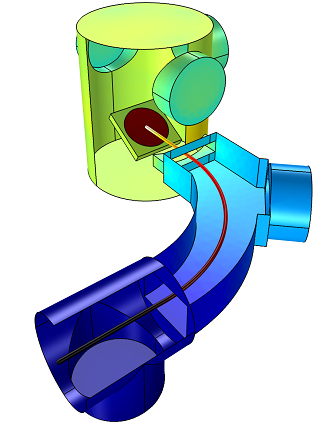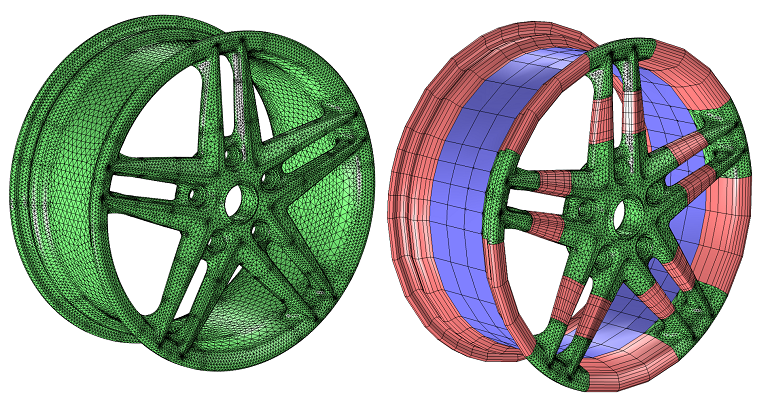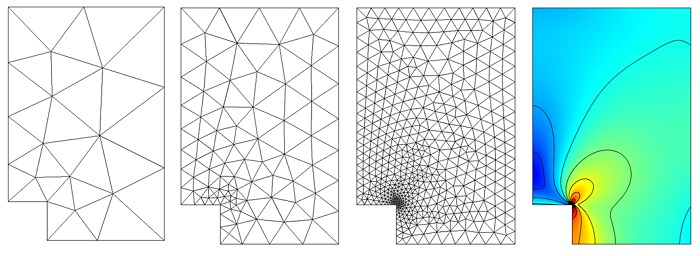Latest Posts

Learn about Modeling Vacuum Systems in COMSOL
Until recently, simulation had not been widely used by vacuum system designers because of an absence of commercial simulation tools. Last October, my colleague James Ransley held a webinar about how to model vacuum systems using COMSOL Multiphysics. The webinar was a great success, and it inspired us to produce a dedicated product for modeling vacuum applications: the Molecular Flow Module (new with version 4.3b). This year, on November 21st, James will be giving a webinar explaining the new features […]

COMSOL Conference 2013 Rotterdam Keynotes on Multiphysics Applications
The COMSOL Conference 2013 Rotterdam was well-attended and highly informative. The keynotes were the high point of the event, and they were excellent examples of multiphysics applications. The sophistication of the modeling work presented by Alwin Verschueren of Philips Research Laboratories in Eindhoven, the Netherlands, and Holger Ernst and Christian Schröder of mieletec FH Bielefeld, Germany, was truly spectacular and kept all the attendees enthralled.

Photos from the COMSOL Conference 2013 Rotterdam
The COMSOL Conference 2013 Rotterdam attracted 418 multiphysics users from across Europe. It was the first time that our conference took place in the Netherlands and as a result, we saw a lot of new faces this year among the participants. I would like to thank everyone who attended the event for making it a wonderful experience and show you some impressions of the conference here on the blog.

Meshing Your Geometry: When to Use the Various Element Types
In a previous blog entry, we introduced meshing considerations for linear static problems. One of the key concepts there was the idea of mesh convergence — as you refine the mesh, the solution will become more accurate. In this post, we will delve deeper into how to choose an appropriate mesh to start your mesh convergence studies for linear static finite element problems.

Philosophy of the Ribbon
Over the past few years, Microsoft® has introduced updates to the user interface (UI) for its Office programs. Microsoft® Office 2013 is all about being touch-screen friendly, and Microsoft® Office 2007 brought the Ribbon interface. The Microsoft® Ribbon was designed to be easier to use than the nested drop-down menus of yore. These days, it’s what we’re used to seeing when working with their tools — and we’ve come to appreciate the ease-of-use, guidance, and clear workflow overview it provides. […]

COMSOL Conference 2013 Rotterdam Award Winners
The COMSOL Conference 2013 Rotterdam came to an end last Friday. After dinner on the second day, six contributions were awarded for their outstanding work: three in the Best Paper category and three in the Best Poster category. The moderator of the awards ceremony — Belgian engineer, stand-up comedian, and COMSOL user — Filip Van den Abeele compared COMSOL Multiphysics to a Swiss Army Knife. After looking at the diversity of subjects that is displayed in the award winning papers […]

Photos from the COMSOL Conference 2013 Bangalore
This year, over 260 multiphysics enthusiasts joined us for the COMSOL Conference 2013 Bangalore. While we did see some familiar faces, it was exciting to see plenty of new users at the event. We were able to capture some of the good moments on camera, and would like to share a selection of the photos with you here on the blog.

How to Identify and Resolve Singularities in the Model when Meshing
In our previous post on Meshing Considerations for Linear Static Problems, we found that, in the limit of mesh refinement, the solution to the finite element model would converge toward the true solution. We also saw that adaptive mesh refinement could be used to generate a mesh that would have smaller elements in regions where the error was higher, rather than simply using smaller elements everywhere in the model. In this post, we will examine a couple of common pitfalls […]
